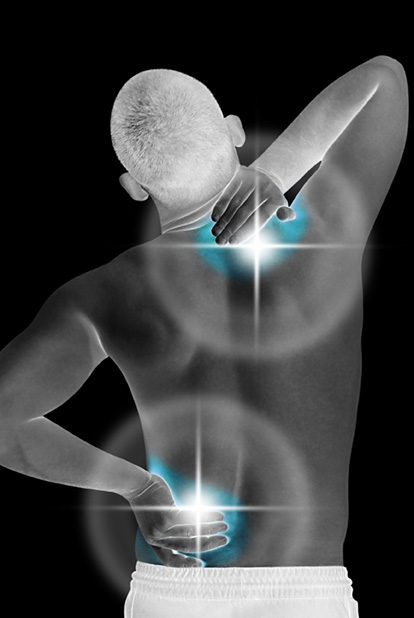 By Richard D. Guinand, DO
By Richard D. Guinand, DO
When many people hear the words ‘disc’ or ‘disc herniation’, they immediately think they’re destined for surgery and a painful recovery. That might have once been the case, but today, it no longer is.
It’s true that when a patient presents with neck or back pain, disc herniation is a potential diagnosis. And it’s also true that surgery is one of the options. But it’s not the only option, and it’s not the first, second or even the third modality available to these patients. Before any treatment, including surgery, is considered, it’s important to determine the etiology of the patient’s pain.
Once a diagnosis of disc herniation (which some patients refer to as a pinched nerve or a bulging disc) is confirmed, there are four potential treatment modalities. For these patients, the goal is always to get the pressure off the nerve root. The first option is physical therapy. Many times, the physical therapist can get the nerve root free and then the pain goes away. The therapist will then work on strengthening the small muscle that attaches to the spine to give it stability, so the pain is less likely to come back. A second option is manipulation by a chiropractor or an osteopathic physician. These two options will usually be successful in 85 percent of patients.
If the nerve root cannot be freed by PT or manipulation, the patient is a candidate for injection, generally an epidural steroid injection to decrease the swelling and inflammation around the nerve root. An MRI is ordered to confirm whether any other underlying spinal pathology is causing the patient’s pain. Whether due to disc or arthritic pathology (or as is often the case in older patients, a combination of both), when injections are added to treatment, the success rate rises to 95 percent.
In some cases, a second or third injection may be indicated to attain relief. Only about five percent of patients will fail all three modalities – physical therapy, manipulation and injections. It’s at this point that it’s appropriate to talk to the patient about surgery. Some will decline, opting instead to seek help from a pain management physician, who can prescribe and monitor pain medications.
But for those patients who do choose surgery, it’s important that they are confident that they and their medical team have exhausted every other potential modality. When patients are comfortable that they have tried every nonsurgical method to eliminate or reduce their pain, they are less apprehensive and more confident facing surgical intervention – and they have a much greater chance for a better outcome.
 Richard Guinand, DO is a Board certified family practice physician specializing in nonsurgical spine care at Sports Medicine and Orthopaedic Center, offering initial diagnosis and treatment of general orthopaedic injuries, acute and chronic back pain, worker’s compensation injuries, and nonsurgical management of spine pathology.
Richard Guinand, DO is a Board certified family practice physician specializing in nonsurgical spine care at Sports Medicine and Orthopaedic Center, offering initial diagnosis and treatment of general orthopaedic injuries, acute and chronic back pain, worker’s compensation injuries, and nonsurgical management of spine pathology.

